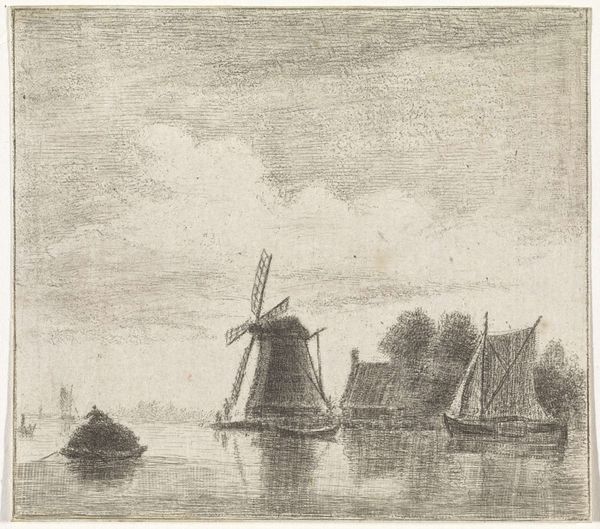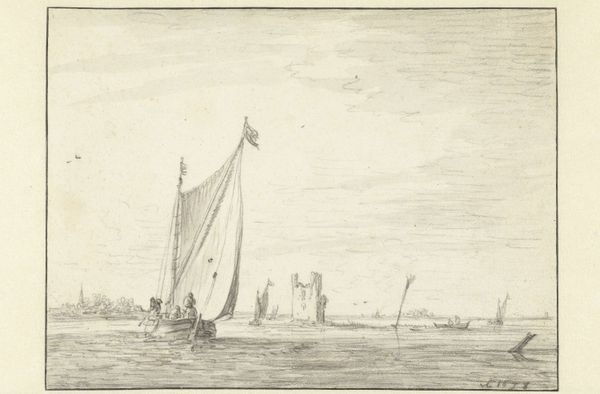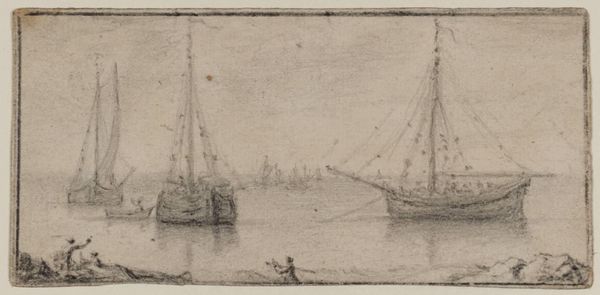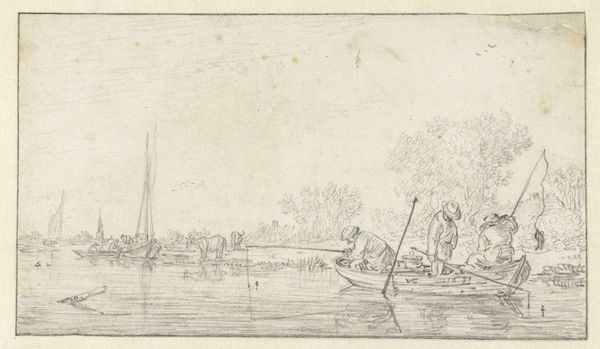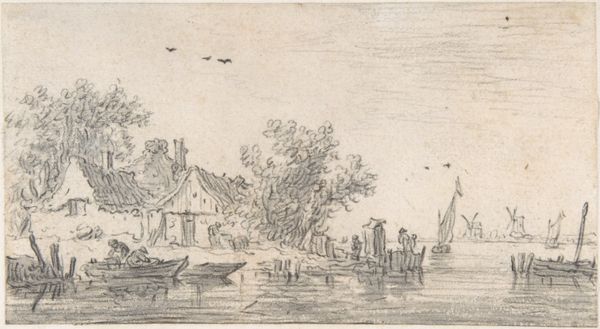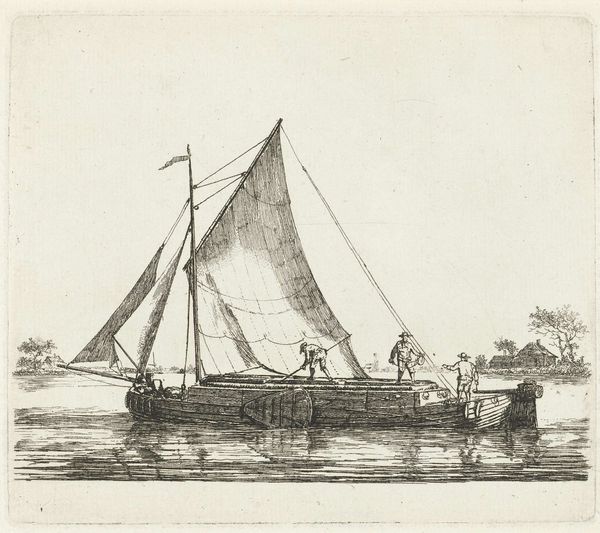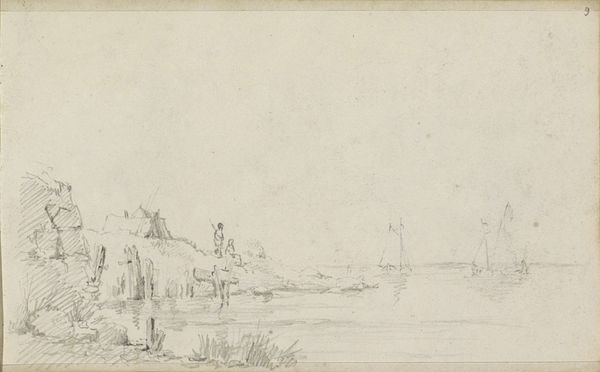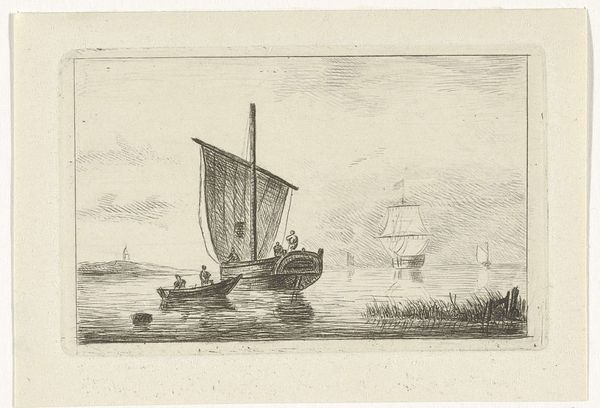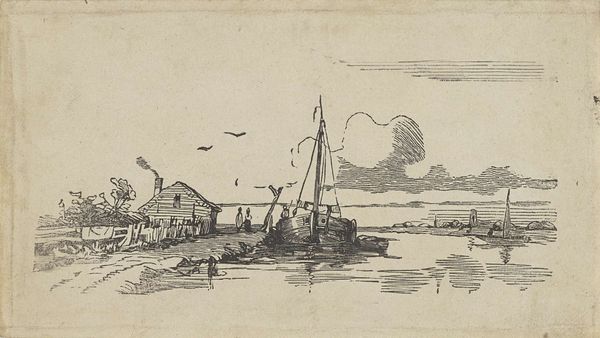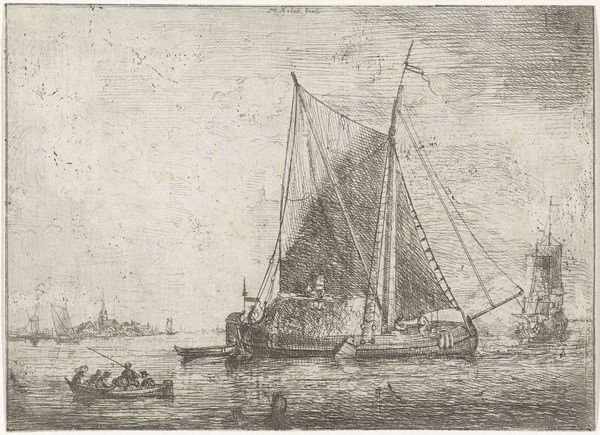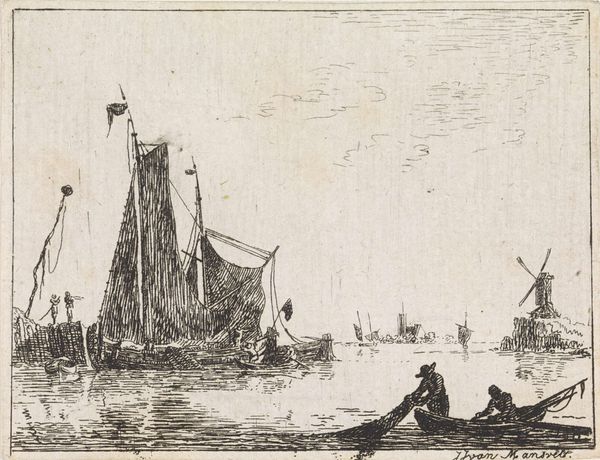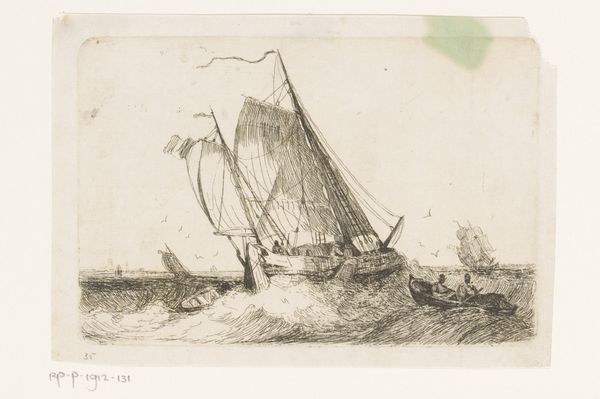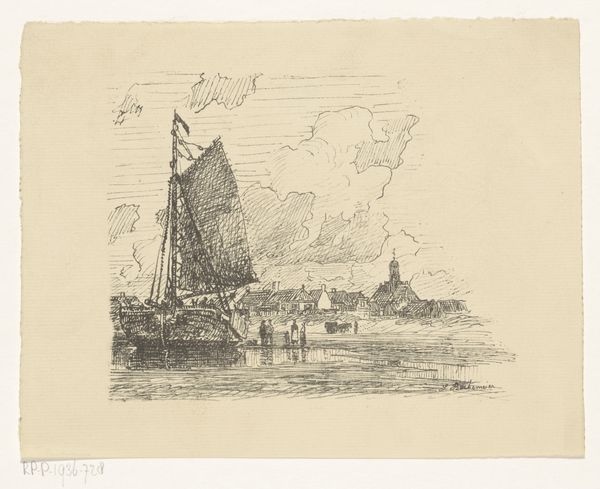
print, etching
#
dutch-golden-age
# print
#
etching
#
landscape
#
river
Dimensions: height 79 mm, width 89 mm
Copyright: Rijks Museum: Open Domain
Curator: "Boerderij aan het water," or "Farm by the Water," is an etching by Hendrik Spilman, created sometime between 1742 and 1784. It's currently housed right here at the Rijksmuseum. Editor: It's surprisingly delicate. The tones are so muted, almost dreamlike. It evokes a quiet, almost melancholic feeling. It's the Dutch countryside, but rendered with a very gentle hand. Curator: Spilman worked during a fascinating period, where we see the rise of landscape as a central theme, reflecting the economic prosperity and civic pride of the Dutch Golden Age, yet already tinged with the beginnings of Romantic sensibilities. The print medium made art accessible to a wider public, cultivating a visual vocabulary around the Dutch identity. Editor: Visually, the most striking elements are the water, and how everything, the boats, the buildings, seems to reflect on it. Water is such a loaded symbol – life, purification, the subconscious. Is it just a quaint farm, or does the artist imbue it with a deeper meaning? The boats especially seem to point towards a kind of spiritual journey or purpose. Curator: Perhaps. Spilman may be tapping into that very symbolism to articulate his culture’s collective sense of self. The imagery of thriving waterways was powerful, connected directly to trade and societal flourishing. It became symbolic of national strength and pride. Editor: True, but what I find compelling is how seemingly mundane objects gain layers of symbolism in artistic expression. We interpret these objects differently, of course, than they might have been at the time of their making, filtered as we are through the long, winding narratives of later historical periods. That subtle ripple in the water takes on a resonance of time itself. Curator: That intersection, though, of historical intention and the passage of symbolic significance, that’s precisely where we engage with the past. Editor: Absolutely. This etching encourages contemplation about the power of the image and its impact through history. Curator: It reminds us how artists like Spilman both shaped, and reflected on, the ever-evolving idea of a nation.
Comments
No comments
Be the first to comment and join the conversation on the ultimate creative platform.
